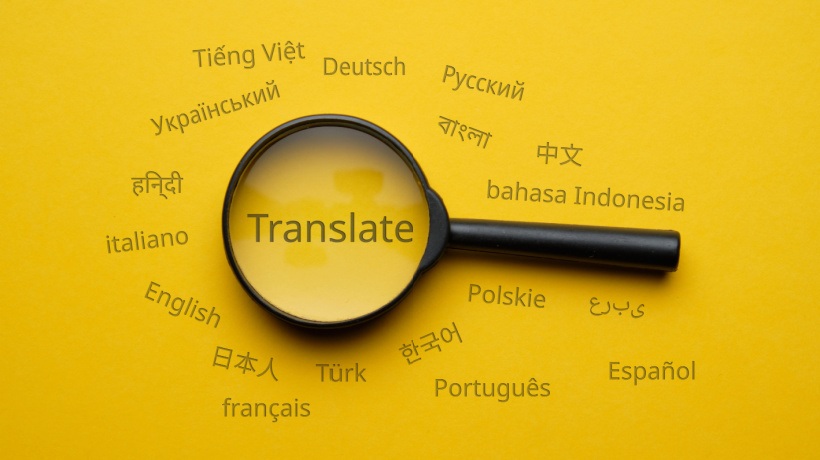How To Get The Translation And Localization Of Your Online Course Right
Just like everything else, eLearning has become a global enterprise. And just as retailers and international corporations must translate websites, manuals, legal documents, etc. into other languages, so must eLearning course designers.
Benefits Of Translating And Localizing Your eLearning Course
And there are certainly many benefits of translating and localizing your eLearning courses into a number of different languages:
- There are those all over the globe looking for online courses of all kinds, including yours if they can only get them in their native languages. This boots sources of income for eCourse creators. If your initial research indicates that your course content will be in demand, it is probably worth the additional cost to have it translated and localized for those regions where it will be popular.
- eLearning companies can gain a foothold as a respected and credible brand. And if the localization is done well, the brand comes to be seen as one that considers cultural appropriateness to be a high priority – another plus for the brand.
- Corporate training, in the form of orientation and professional development activities, as well as policies, jobs descriptions, etc. can be done in two ways. The company can hire a local who verbally presents all of this to the employed staff in a foreign region. This is inefficient because new staff may be added at different times and current staff may be at different points in their professional development. But if all of this training is contained in eLearning courses that staff can access and learn independently, that graining is as efficient as it can be.
Ways To Get The Translation And Localization Of Your eLearning Course Right
So, how to go about doing this well? Most eCourse creators are very fluent in their native languages and culture but have little to no mastery of foreign languages and cultures. Obviously, they need help. As they seek help, there are some preliminary activities that they should complete:
1. Anticipate In Advance
If you think that your course will be someday translated into other languages, then save yourself and your translator a lot of additional work by crafting textual content simply. Avoid complex, lengthy sentences with unnecessary tough vocabulary. It stands to reason that you will also want to avoid idioms and other phrases that will be tough to translate. A phrase such as, "When pigs fly" is well understood in the English language – it means that something is basically impossible. Obviously, a native translator may not have a clue as to its meaning, and you will be speaking to your translator many times to provide explanations.
2. Start Somewhat Small
Once you have decided to get your course translated and localized, there may be a tendency to "go all out", – to get the course translated into as many languages as possible. This can be a bit costly, but even if you are willing to spend the money, working with a translator takes time. Trying to work with multiple translators at once can result in errors that you won’t catch.
3. Do Your Own Cultural Research
Above all, you do not want to be offensive in any way. Your course may contain images or videos, and even some content language that might be offensive. Try to identify those that stand out to you and begin to develop replacement visuals or content on your own. Obviously, you will want to consult with your ultimate translator, but doing as much initial groundwork as you can help.
There are extreme examples of things that a course designer will obviously pick up on his own. They may include a bit of humor, but are, in fact, most of the times a real thing. When localizing the course for many regions, you have to check beforehand whether something could be completely offensive.
4. Scripts For Audio And Visual Content
Most eLearning courses have both audio and video content – it makes the course more interesting and enhances learning. The best thing to do to save time and money is to have a script ready for your translator in advance. Transcription takes a long time and can be pricey.
5. Choosing Your Translator
Finding the right person(s) cannot be stressed enough. You will want native speakers who have experience in translating and localizing all types of content. There are many reputable translation/localization services available. Be certain to look for recommendations from trusted sources or check out reviews for translation services on several of the sites that exist for this purpose.
Choosing the right service is only one step. Once that service provides a native translator, you need to spend some time in discussion with that person. You want someone who you feel comfortable with and who will be responsive, as well as expert.
6. Some Technical Tips
Your translator may be able to suggest some things to use, such as layout, font, etc. Take this advice, if that translator is experienced in localization. Just remember that different languages take up different amounts of space, and you do need white space. And choose a normal, easy-to-read font. If the translation will be into a non-Roman language (e.g., Japanese), odd fonts only confuse the matter.
If you anticipate translation and localization, do not embed text in your graphics. The text cannot be extracted. The graphic will have to be re-created, and this, too, can be pricey (not to mention imperfect). Giving the translator source files that are editable will be the best option.
Watch colors and symbols – they can be either offensive or not known. Rely on your translator for advice on these matters.
Translations matter down to the details
eLearning translations are becoming far more common today. From university coursework for students in developing regions who do not have access to physical learning institutions to corporate training programs, and much in between, eLearning has certainly become a global industry. eCourse creators who want to reach these global audiences have to do it right. Serious errors can result in a poor experience for learners and offensive errors can ruin reputations. Go slowly and deliberately into translations and localizations – the old adage "haste makes waste" applies here.








